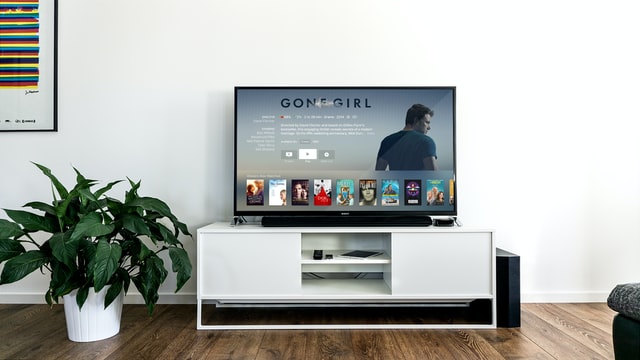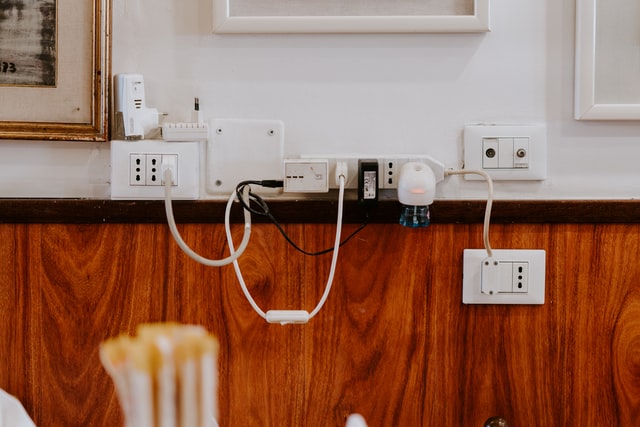There was a time when planning your home to perform basic tasks was purely the realm of science fiction. That time has well and truly ended, and while we may not be living the Star Trek life just yet, technologies like Z-Wave—a lower power alternative to Wi-Fi—are fuelling the continued growth in capabilities of home automation technology.
Welcome to Smash.to!
Long gone are the days when having a fancy (and, let’s be honest, gimmicky) feature like a clapper light switch required a skilful technician to install. These days, we can have all the power of voice command over our home appliances with little more expertise than is needed to set up a new phone or television.
That being said, there we’re not quite at the stage where we can just take a device out of the box, plug it in, and we’re done—there’s still a little work to do. This includes considering any considerations about your home and the infrastructure you have available, but don’t worry, we’ll take you through it all.
So where do we start?
Get Your Smart Home Connected

Most smart home devices today rely on an Internet connection to function, or at least to take full advantage of all the features they offer. We wouldn’t expect anyone looking at building a smart home to not have an Internet connection at all, but there are other concerns you might not have thought of.
It’s not enough that you have an Internet connection in your home, your devices need to benefit from that connection. That means that any of your smart devices that are out of range of your home Wi-Fi will need to either be moved within range, or you will need to look at solutions for expanding your Wi-Fi coverage (extender).
If you work remotely or at your home office, following a safety checklist to protect not only from health hazards, but also valuable business data is of huge importance, or you risk ending up a victim, says firewall engineer Ivan Radev.
Another thing to consider—although this should be less of a problem with modern routers—is the number of connections you can have. Some routers (and Internet service providers) have restrictions on the number of devices you can have connected at any given time.
When you consider that every smart lamp, thermostat, and security camera counts as an individual device, this number soon adds up!
Choose a Smart Hub for Your Home
While most smart device manufacturers will have their own app or service for controlling their products, this can soon get messy. If you buy devices from several manufacturers, you could end up with half a dozen apps for controlling the different systems in your home. Just make sure you hack-proof digital assets, as multiple apps mean multiple weak points.
A smart hub not only gives you a central point of control for all your compatible devices, but it will also usually give you an easier way to control your devices.
With proprietary apps, you must open the device (usually your phone) and then the relevant app. With something like an Amazon Echo or Google Home, you can just ask it to do what you need it to.
Most smart home devices and hubs will work together these days, so you don’t need to worry about only buying devices from the manufacturer that makes your hub.
Amazon has made great strides in this market with a range of devices, but there’s more than just Amazon, Google, and Apple in this market. Hubitat, Samsung, and Starling also have excellent products in this space.
Choose Your Smart Devices

This is the fun part—choosing the devices you’re going to have in your home. If you’ve chosen a smart hub with a personal assistant like the Amazon Echo, you already have a device capable of doing things like delivering weather reports, playing music, and performing a range of other tasks on command.
Smart Outlets

After that, the most common device to add to your smart home network is smart plugs. Smart plugs are popular because of their versatility. You can use these to turn any device that connects to a standard electrical outlet on or off. This means that, rather than buying an expensive smart lamp, you could buy a smart plug for (usually) much less and convert a regular lamp you already own into a smart lamp.
You will need to factor in the type of device you are going to connect.
However. If you have a device that goes into “standby mode” when it is powered on, using a smart plug will not work.
For things like a lamp with a physical switch, however, smart plugs are perfect.
Smart Thermostats

Beyond plugs, smart thermostats are very popular. These not only allow you to control your heating using voice commands and apps, but they will also typically have much more efficient heating programs that can end up saving you money in the long run!
Other Smart Devices
Other popular devices include security cameras and doorbells that you can check remotely, allowing you to check who is at your door from your phone when you’re not home.
An important note on smart door locks and safety comes from Speedy Locksmith, as these are subject to hacking, which ultimately makes IoT locks a terrible choice. Think twice before you install these on your doors.
Dangers of Smart Meters Know the Truth
Don’t Neglect Functionality
It’s easy to get caught up in the gimmicky side of being able to turn your lights on with a voice command, but there is immense potential for improving your quality of life using smart home devices.
We have already touched on the money-saving capabilities of smart thermostats and the security features of smart doorbells. There are also smart smoke alarms, security devices, key fobs, biometric scanners, and more. These devices may not have the obvious and visible impact that something like a voice-controlled lamp does, but they can save you money, add convenience, and give you peace of mind.
And, if you want to go all out, you can even get solar-powered smart blinds, giving you the ability to control your window blinds remotely while using renewable energy, comments expert in solar panels John Keohane.
Smart Waste Management

With junk and trash, the smart role is up to you and not technology. At least not to the part of generating it. You should set up and learn to separate, so recycling can happen once sent to your dumpster or landfill, comments the specialized waste company Bin There Dump That.
Final Thoughts
The smart home market is constantly expanding and growing. The technology involved continues to advance, offering more functionality and better performance. Even if the idea of a microphone constantly listening for your commands isn’t your cup of tea, smart home technology still has a lot to offer.
As with most things in life, it will take a little thought to get the most out of your smart home, but there are plenty of knowledgeable sources to help you find your way.
